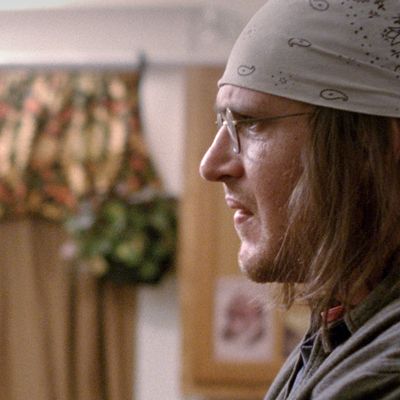
To its credit, The End of the Tour makes it very clear that David Foster Wallace would have fucking hated The End of the Tour. Based on David Lipsky’s memoir, James Ponsoldt’s film looks at a few days in the life of the late author during the 1996 book tour for his breakout novel Infinite Jest. Lipsky, played in the film by Jesse Eisenberg, was trying to write a Rolling Stone profile of Wallace, played here by Jason Segel, and found his subject to be pathologically afraid of the attention — terrified of looking like a phony or trying to capitalize on his newfound celebrity. The film may look like a biopic, but it’s ultimately about that very fear.
Ponsoldt’s film starts roughly, with the standard biopic clichés of Lipsky finding out about Wallace’s 2008 suicide, then flashing back to 1996 and to his attempts to convince his editors at Rolling Stone to let him profile Wallace. (Editor: [slaps magazine on Lipsky’s desk] “There better be a story there!”) It’s only after the journalist finally arrives in Bloomington, where Wallace taught, that the film starts to come into its own. The ins and outs of magazine-profile writing — the constant note-taking and recording, the playful negotiation and renegotiation of what should be printed and what shouldn’t, and the danger of becoming either too friendly with your subject or prying too inappropriately are all deftly handled. But what’s most impressive about The End of the Tour is that it understands its boundaries and limitations; it slowly starts to acknowledge the very unknowability of its subject. That’s not a new conceit, and it’s already been explored in everything from Citizen Kane to Almost Famous. But this film has a few new moves on it, too. And it’s got Jason Segel.
My friend Jada Yuan has already written about the performance and the acclaim it’s gathered. I’ll be honest: When Segel first appeared onscreen, I worried. The performance was fine, but it initially felt like an impersonation — all nervous tics and crossed arms and hesitant monotone. But he gradually softens, and the performance mutates. To be fair, his Wallace never stops being nervous or awkward, but there’s something very alive about the way he dances between the earnest and the standoffish. You can sense him thinking, trying to hold back, then opening up, then pulling back again. By the end, I couldn’t take my eyes off Segel and his thoroughly immersed, deeply intelligent performance. He keeps you guessing — which is kind of the idea.
Lipsky wants to understand Wallace not just as a person, but also as an artist. In his mind, the two must be connected in some way. They are, but the more he discovers, the less he knows about the creative act. Late in the movie, trying to cram in some last-minute clandestine reporting, Lipsky secretly enters Wallace’s study. The lights are off and the room is pitch-black, save for a sliver of light shining through the edge of a drawn curtain. It illuminates nothing. All it reveals is how deep the mystery runs.


